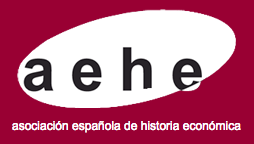Did the non-adoption of the gold standard benefit or harm Spanish economy? A counterfactual analysis between 1870-1913
DOI:
https://doi.org/10.33231/j.ihe.2019.07.001Palabras clave:
Patrón oro clásico, España, Tipo de cambio, Contrafactual, SVAR, E42, E52, E63, N10Resumen
Este artículo pretende trazar una visión general de lo que habría sucedido si España hubiera mantenido estable su tipo de cambio (si no hubiera habido choques cambiarios que afectaran al crecimiento económico) entre 1870-1913. Se dice que ante notables impactos económicos las rigideces del sistema monetario inhibieron la recuperación, particularmente en los países de la periferia. ¿Hubiera sido mucho mayor el impacto de los ciclos económicos si se hubiera mantenido el tipo de cambio estable? Para responder a esta pregunta presento un análisis contrafactual basado en un modelo SVAR. Además, este estudio quiere mostrar cuán importantes para explicar las fluctuaciones del crecimiento económico fueron las políticas macroeconómicas (que se ejecutan fuera del patrón de oro). También se busca entender qué variables ayudaron a aumentar el crecimiento y cuáles perjudicaron la economía mediante el análisis de la descomposición histórica de las variables. Mi estudio arroja nueva luz sobre el funcionamiento de la política macroeconómica en España durante el patrón oro clásico. Tener un tipo de cambio fijo hubiera hecho las caídas del crecimiento más profundas hasta el comienzo del siglo xx. A partir de ahí, la adopción del patrón oro hubiera sido una buena opción. Los resultados del trabajo aportan nueva evidencia en el debate centro-periferia para el periodo conocido como «patrón oro clásico».
Descargas
Descargas
Cómo citar
Número
Sección
Licencia
Aquellos autores/as que tengan publicaciones con esta revista, aceptan los términos siguientes
- Los autores/as conservarán sus derechos de autor y garantizarán a la revista el derecho de primera publicación de su obra, el cuál estará simultáneamente sujeto a la Licencia de reconocimiento de Creative Commons Reconocimiento-No comercial-Sin obra derivada 4.0 Internacional que permite a terceros compartir la obra siempre que se indique su autor y su primera publicación esta revista, y no permite hacer uso comercial de la misma ni tampoco obras derivadas.
- Los autores/as podrán adoptar otros acuerdos de licencia no exclusiva de distribución de la versión de la obra publicada (p. ej.: depositarla en un archivo telemático institucional o publicarla en un volumen monográfico) siempre que se indique la publicación inicial en esta revista.
Plagio y fraude científico
La publicación de un trabajo que atente contra los derechos de propiedad intelectual será responsabilidad de los autores/as, que serán los que asuman los conflictos que pudieran tener lugar por razones de derechos de autor. Los conflictos más importantes pueden darse por la comisión de plagios y fraudes científicos.
Se entiende por plagio:
- Presentar el trabajo ajeno como propio.
- Adoptar palabras o ideas de otros autores sin el debido reconocimiento.
- No emplear las comillas u otro formato distintivo en una cita literal.
- Dar información incorrecta sobre la verdadera fuente de una cita.
- El parafraseo de una fuente sin mencionar la fuente.
- El parafraseo abusivo, incluso si se menciona la fuente.
Las prácticas constitutivas de fraude científico son las siguientes:
- Fabricación, falsificación u omisión de datos y plagio.
- Publicación duplicada.
- Conflictos de autoría.





